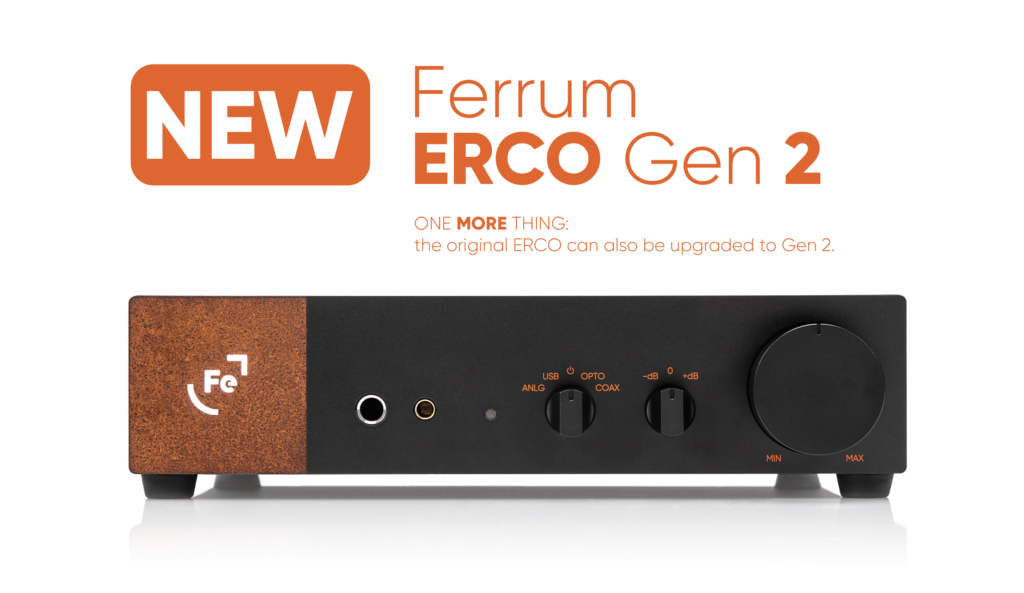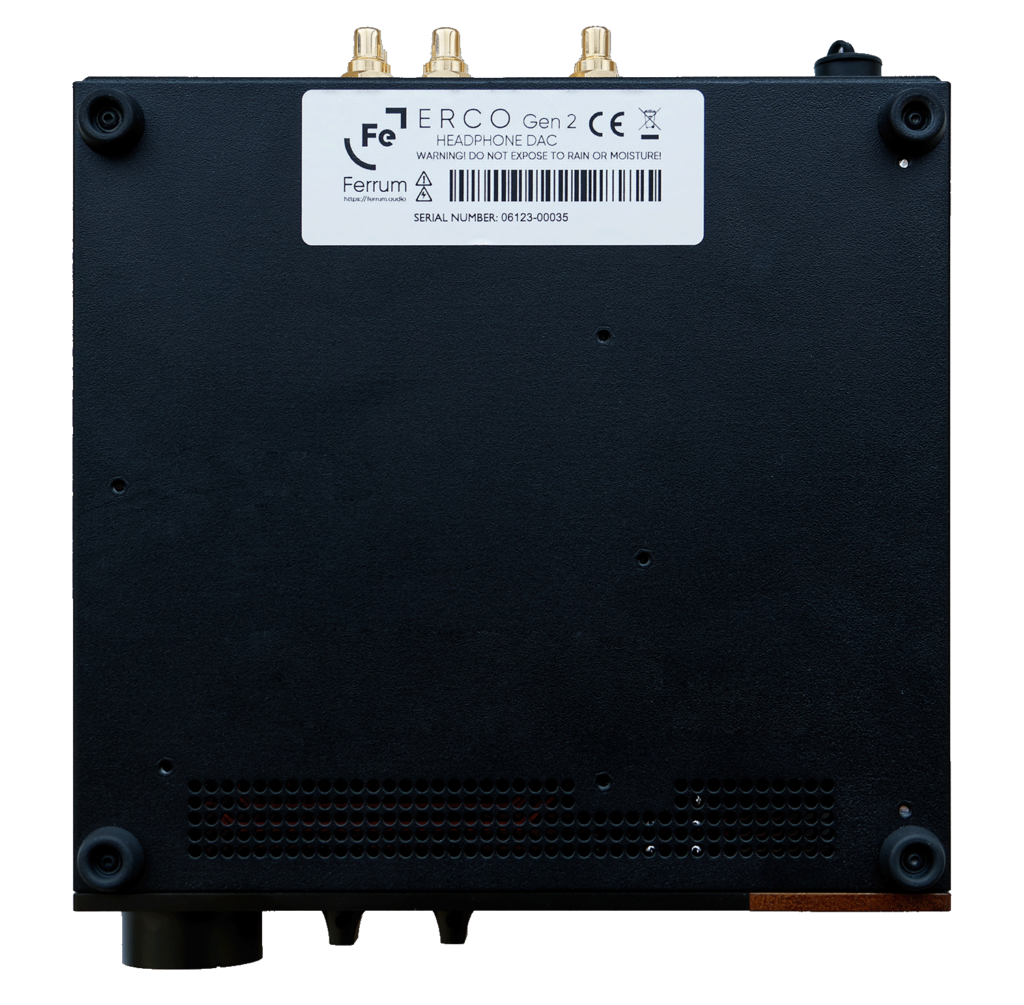
Closer to the Music: Ferrum ERCO DAC evolves to Gen 2 with massive firmware update and circuitry upgrade
New generation elevates ERCO nearer to the level of the flagship WANDLA
With the full reprogramming of ERCO’s software in combination with crucial changes in the analog circuitry , we are introducing a newer, better ERCO.
ERCO Gen 2 will bring our entry-level DAC one step closer to the performance levels of WANDLA, our flagship converter. We even created a program for existing ERCO owners to upgrade their units to the new ERCO Gen 2 specifications.
The complete reprogramming of the original ERCO involves putting a new bootloader in the deepest part of its memory and goes much further than a regular firmware update. Doing it like this, we are even able to use the experience gained from developing our SERCE platform and elevate the original ERCO to a level nearing its bigger sibling WANDLA. Now, our entry-level DAC will bring you closer to the music than ever before. The DSP in ERCO Gen 2 will equal WANDLA, bringing things like 768 kHz support, DSD512, improved DAC performance and including our users’ most preferred WANDLA digital filter.
Analog improvements in ERCO Gen 2
After designing the new I/V converter for WANDLA, we’ve gained much experience and made many discoveries in this area. The ESS DAC chip used in ERCO Gen 2 is a smaller version of the one used in WANDLA (WANDLA – ES9038PRO, ERCO – ES9028PRO), but the original ERCO uses an I/V converter designed in the “pre-WANDLA” style. The ERCO Gen 2 has important updates to the I/V converted informed by our experience with WANDLA, which give it a more detailed sound signature.
Digital improvements in ERCO Gen 2
Since the digital hardware in ERCO is very similar to the hardware in our SERCE board, we were able to port the full SERCE software stack to ERCO. It means that ERCO Gen 2 behaves exactly as if it were based on SERCE. We have added the HQ Apodizing digital filter, the same which is available in WANDLA and preferred by current WANDLA users. We have bypassed the filters in ESS, including MQA for all non-MQA signals and USB playback of 768kHz signals is implemented. What’s more, we have reduced intermodulation and intersample distortions and adjusted output levels to meet RED book standard on the line output and maximum output power on headphone outputs.

Did you know that you can upgrade your original ERCO to the new, second generation?
Because we want current ERCO owners to profit from the Gen 2 improvements as well, we made sure the original ERCO can be upgraded to ERCO Gen 2! The upgrade process involves performing a full and deep reprogramming and upgrading the circuitry of your ERCO to Gen 2, which needs to be performed by Ferrum certified engineers. By upgrading your ERCO, this entry-level DAC is not only made totally up to date but will give you the same performance as ERCO Gen 2, which is available in stores right now. Once upgraded, even the original ERCO will perform much like our flagship DA converter WANDLA.
UPGRADE
It’s very simple – just contact us and send us your ERCO and we’ll do the rest.If you purchased your ERCO after July 1, 2023, the upgrade will be free of charge. Otherwise, the upgrade will cost 195 euros or dollars.
If you are interested, please go to:
Our website: ferrum.audio support section and open a new ticket.
Click on Technical Support and fill out a form. Click “send” button.
In this way you will contact us and we guide you through the whole process of upgrading.
Upgrade of the original ERCO to ERCO Gen 2 includes:
- firmware based on SERCE software architecture
- I/V stage improvement
- added 768 kHz support (USB only)
- added DSD512 playback
- DSP updated (exactly as in WANDLA):
- MQA decoder and renderer works only for MQA signals
- replaced ESS filter with HQ Apodizing filter
- disabled first-stage filters for high sample rates (≥352.8 kHz)
- improved DAC chip configuration
- changes from firmware v1.0.3 of the original ERCO:
- adjusted signal level to RED BOOK (2V unbal / 4V bal. RMS)
- reduced intermodulation distortion for full-scale signals

